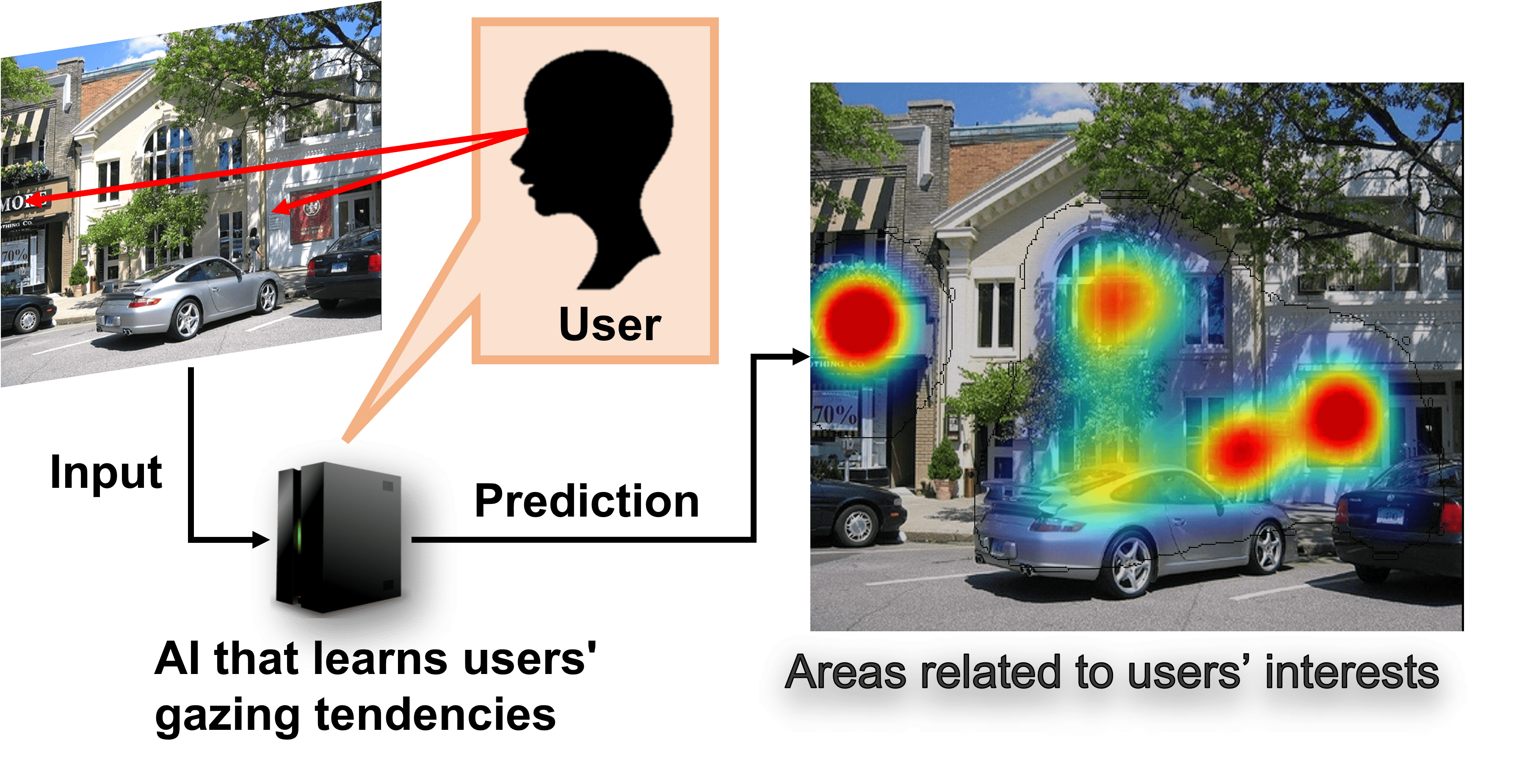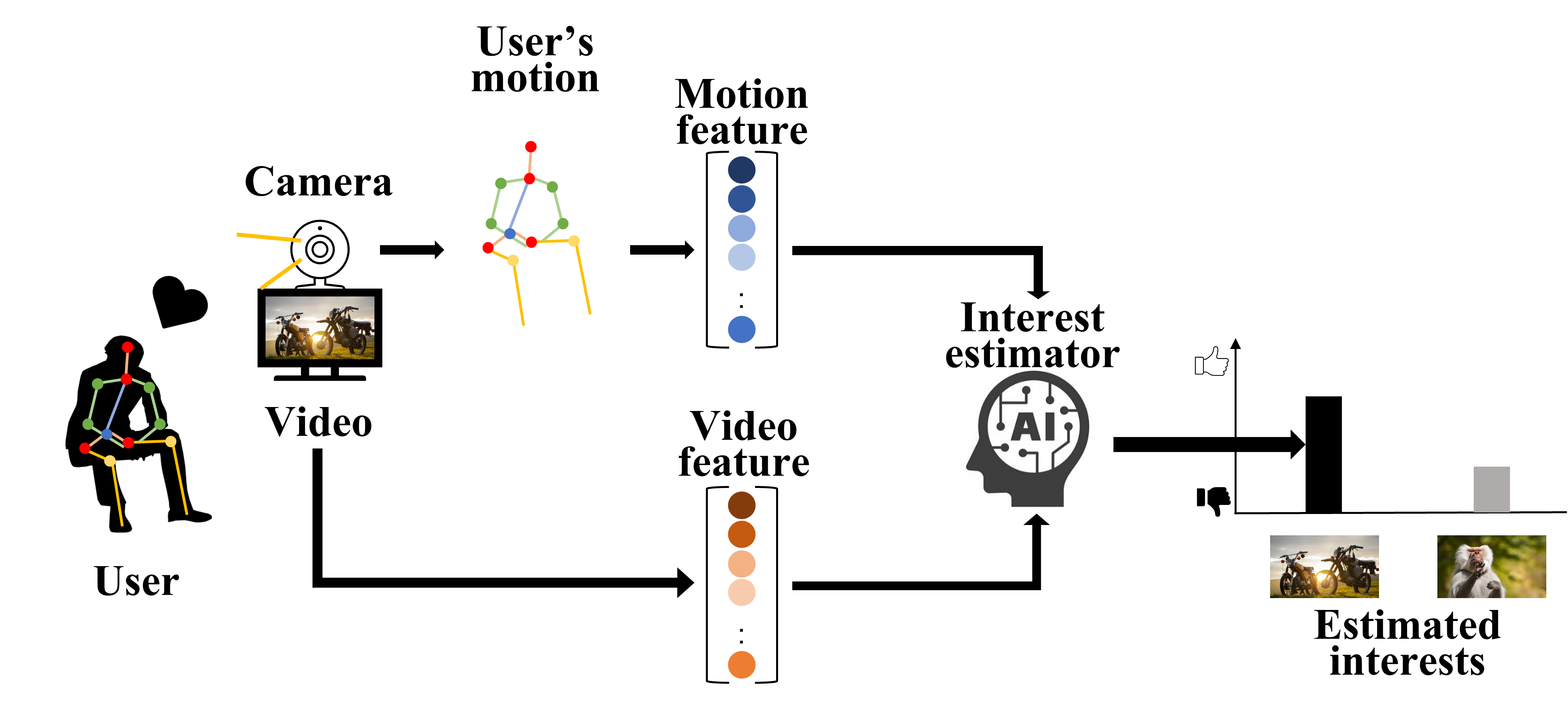Tacit Knowledge Understanding
Gazing Area Estimation of Images and Videos
Humans acquire information from the outside world through the five senses, and most of the information is acquired through vision. The area that we gaze at (gazing area) is mainly determined by bottom-up attention and top-down attention. Bottom-up attention is instinctive, and the area that triggers this attention is the area that humans commonly gaze at. Top-down attention, on the other hand, is caused by a person’s explicit will, and the area that causes this attention differs from person to person. In the Laboratory of Media Dynamics, we are conducting research to realize the estimation of interest in multimedia contents that users have not watched yet by using artificial intelligence (AI) to predict such individual differences in gazing areas. Specifically, we estimate the gazing area for images and videos by capturing a user’s gazing tendency from a small amount of gaze data obtained from each user.

Interest Estimation Using User’s Motion Information During Video Viewing
With the prevalence of video distribution services such as Netflix and Amazon Prime Video, the importance of recommendation systems that can present videos of high interest to users from the vast amount of videos available on the web is growing. In previous recommendation systems, users’ interest has been estimated on the basis of users’ evaluation of a video viewed in the past. However, if a user has not evaluated this video or the evaluation provided is inaccurate, it is difficult to accurately estimate the user’s interest and to recommend this video with high-accuracy. Thus, in the Laboratory of Media Dynamics, we are developing an AI technology that can estimate a user’s interest in a video based on the user’s movements (gaze, facial expressions, skeletal movements, etc.) while watching the video. This AI technology is expected to realize a recommendation system that is highly accurate and does not require an evaluation by users.


